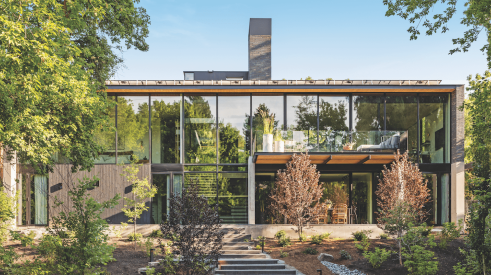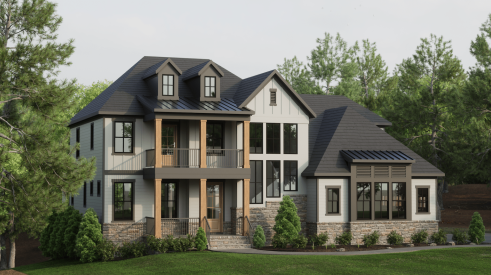|
|
|||||||||||||||||||||||||
Each of the case studies in this article tells us something we can build upon in creating future master-planned communities, particularly in what we have learned in the last 10 years since Celebration. The four cornerstones of planning must be:
Creating future master planned communities must involve three primary perspectives:
Let's look at each point. Too few developers consider the long-range effect development has on the local area, whereas the local public officials and politicians charged with approving and entitling our community and development plans look long-range and ask the question, "What is good for my city, my county, my region and the people who will live, work and play here?"
The Celebration Cornerstones to 12 Guiding Principles offer a good example that involves all stakeholders — municipality, environmentalists, and existing community. It begins with the Cornerstones expanded to include Social Infrastructure, Safety and Security, Environmental Sensitivity and Sustainability, Green and Sustainable Building, Neighborhood — A New Urbanism/Suburban Blend, Integration of Mixed Uses — Strategic and Tactical, Economic Vitality and Viability, and A Shared Vision of Strategic Alliance Partners. The public sector was delighted to know that the developers and builders were thinking longer range and, therefore, the development dialogue continued on a partnership basis rather than from adversarial, us against them, power positioning.
Once we understand and accept that future master-planned communities should be based on collaboration of everyone in the process, we must step back to consider what the markets of the future will look like and what people will want as they enter different life stages with changed lifestyles.
Seventy-six million baby boomers is the first place to look as, incredibly, the leading-edge boomers turn 60 in 2006. A limited number of developers and builders truly understand how different the attitudes and preferences of this aging population are from past generations. Therefore, how we plan, design, develop and market for them needs to change dramatically. There are huge opportunities for reinvention, the surface of which has only been scratched. Generation X is right behind them and they are entering the household formation stage with different aspirations, needs and wants. Master-planned community developers and builders who understand the diversified consumers of this generation will leap ahead of their competition.
Another wide open market for the master planned community developer is planning and designing for the dramatically growing minority markets. As stated in the recent State of the Nation's Housing by Harvard University, builders who want to continue to produce for the family market must pay attention to the growing minority markets and their aspirations, wants and needs. Will minorities merely fill up our existing communities and subdivisions, that were built for the family market in suburbia over the last 60 years? This is already happening, as the older White population reaches the empty nester stage and moves out. Or, can we create desirable places to attract minority markets in planned environments that are appealing to all races/ethnic and age groups?
The next, and possibly biggest market opportunity, is designing planned communities based on what women really want. Women in our society make over 80% of consumer spending decisions yet we are just now acknowledging this force and how to design for it. Savvy community developers and builders are acknowledging that if they design places that focus on the safety, connectivity, nurturing, and the time-stressed needs, wants and requirements of female consumers, they can create a sustainable competitive advantage.
These markets provide the opportunities to explore — from a new perspective — infill, urban and suburban locations, as well as greenfield planned communities. We believe this can best be accomplished within a holistic framework, used as a guide and a checklist, which incorporates what we have learned from the past that enables us to design for the future. This process begins with a vision which answers the question, "What do we want to create?" Answer should be based on a market, or people-driven strategic planning process that looks short term as well as long range. Next comes the market segmentation and product diversification program that project product absorption (which allows master planned communities to be financially viable). This framework (see sidebar for the full list) aided in the planning and positioning of the Centennial and Kennecott communities.
Think in terms of the vision — the Big Idea — based on knowledge of buyer preferences and then consider every element that will make planned communities a place that enhances and enriches the value of their lives. We must consider everything we can do to create desirable, appealing and meaningful planned community environments and then value engineer the houses so the homes we deliver are affordable. This means balancing value added components (our community planning and design wish list), and cost containment, so we can deliver affordable homes. It is the essential challenge and opportunity as we envision the design of master planned communities in the next decade (2005 to 2015) and beyond.
Advertisement
Related Stories
Design
2023 BALA Winners: The Best of the Best
You'll find plenty of inspiration in these four award-winning projects from the Best in American Living Awards
Design
What Gen-Z Buyers Really Want in a Home
The fervor of planning for Millennials in the home building industry has now pivoted to Gen Z. So, what does this new generation want?
Design
4 Luxury Production Home Designs to Inspire
Yes, these are designs for production homes, but you won't find any cookie-cutter repetitive elements in this high-end selection






